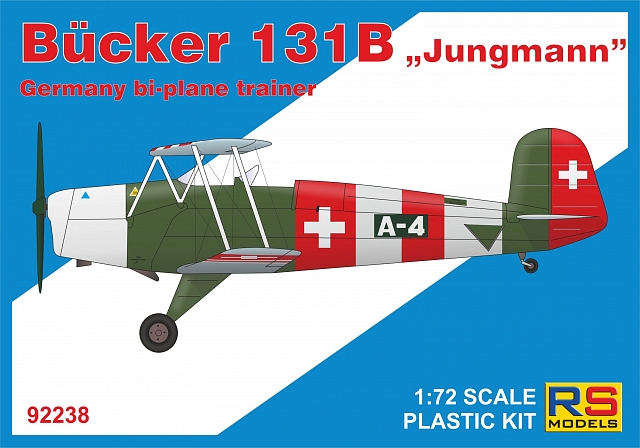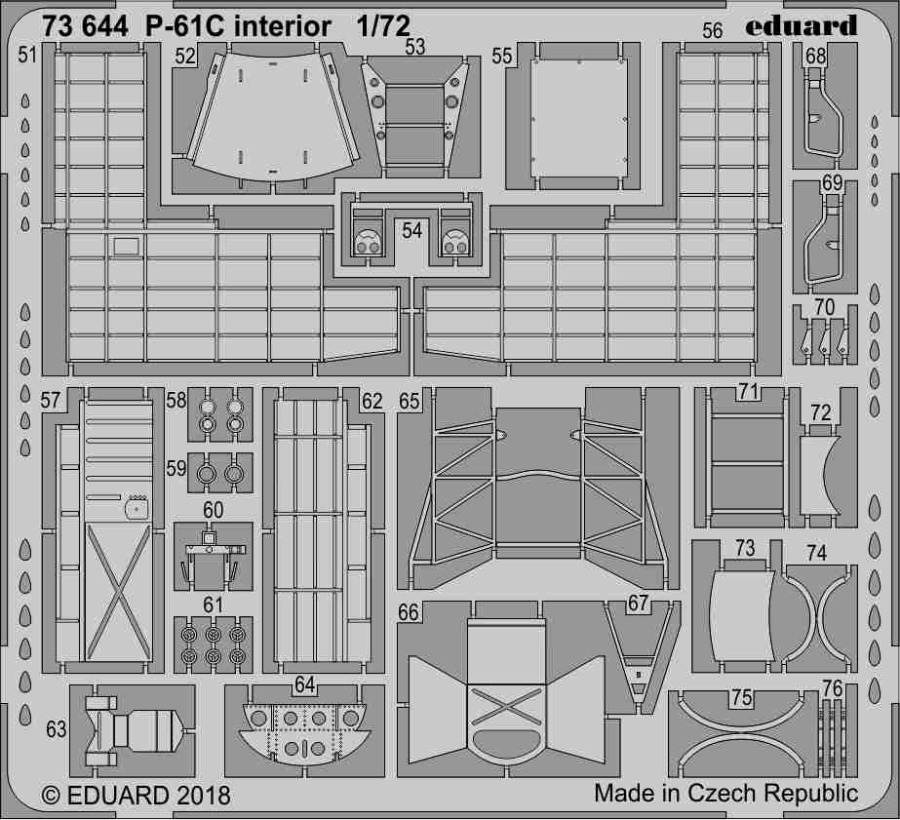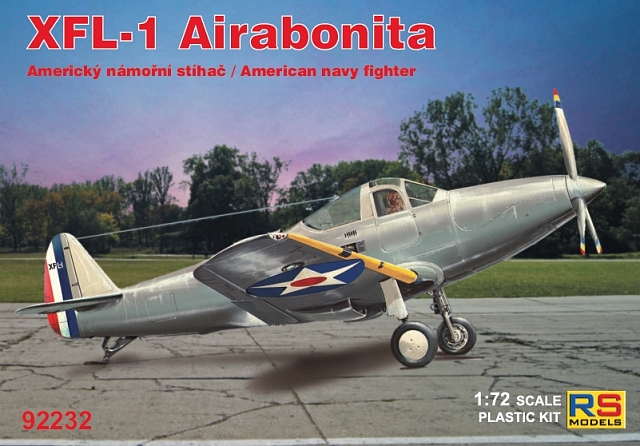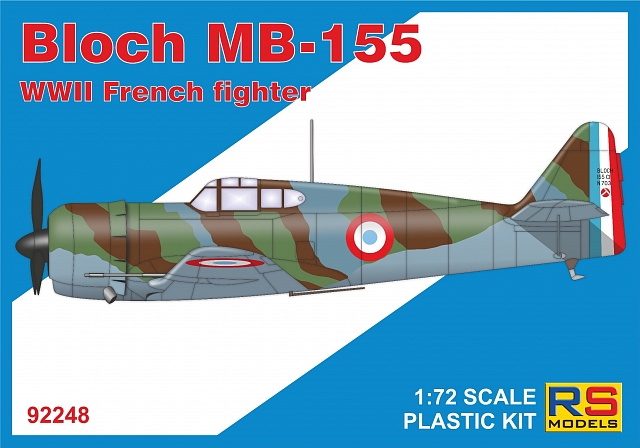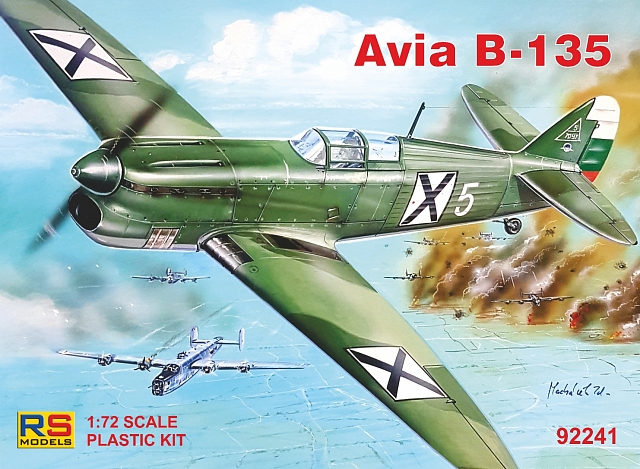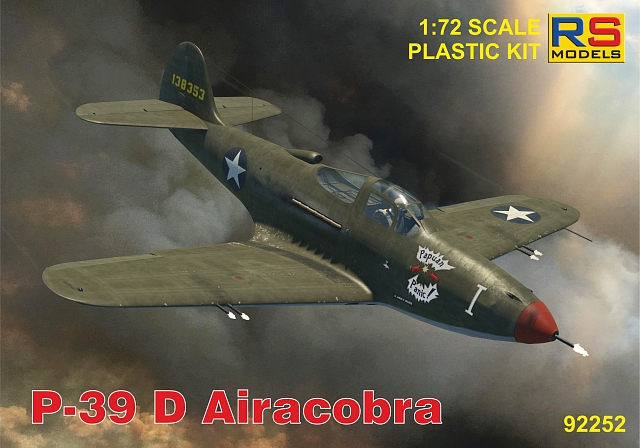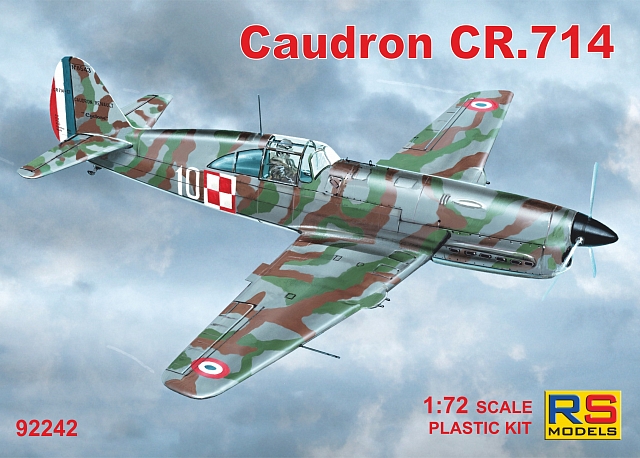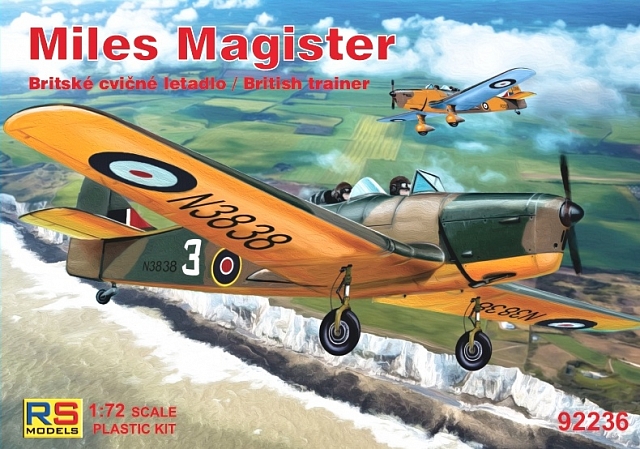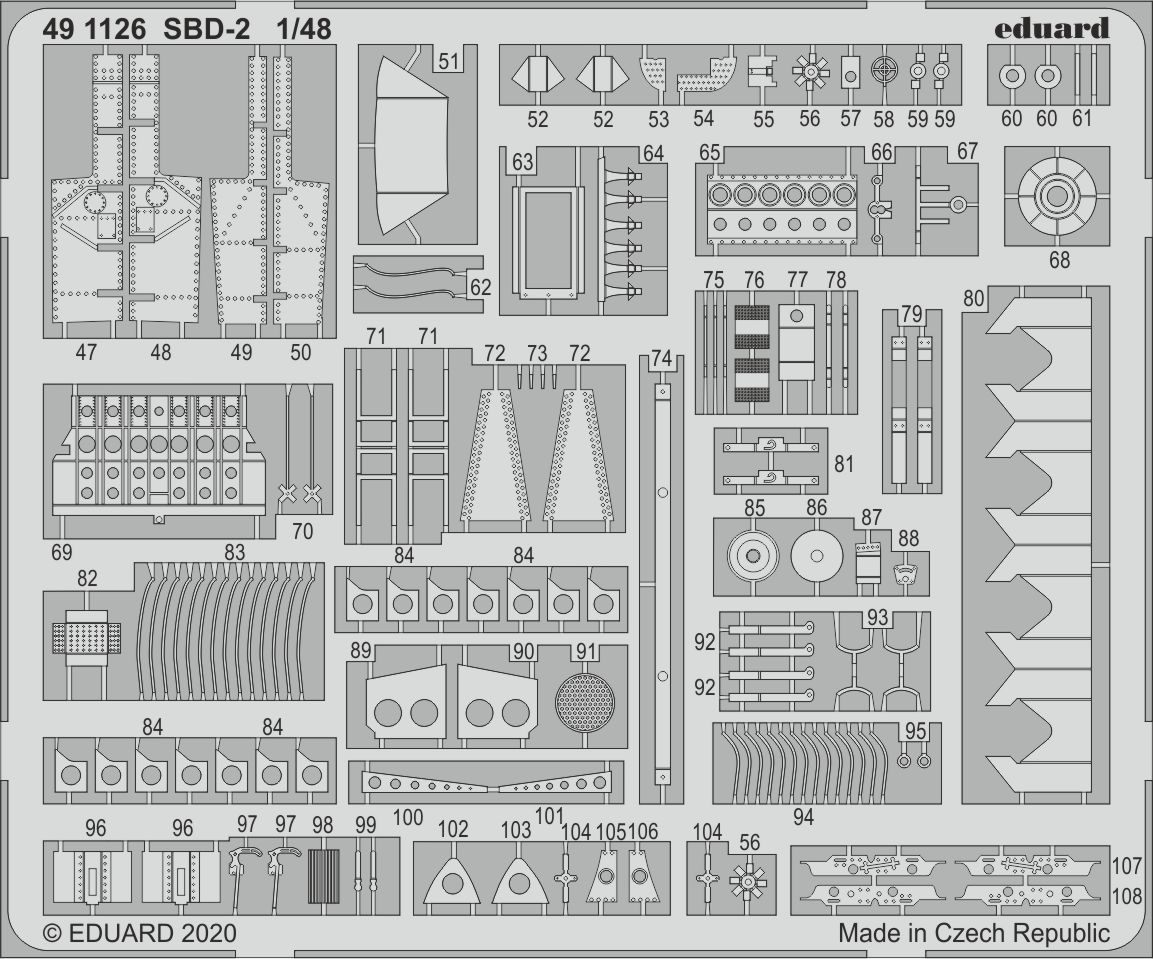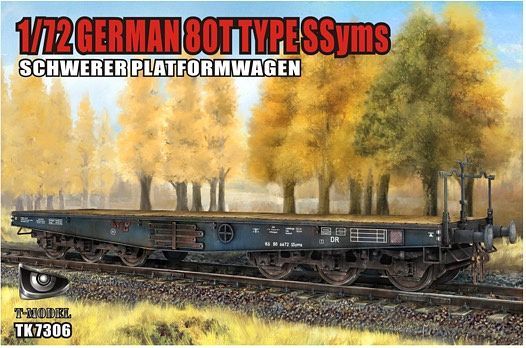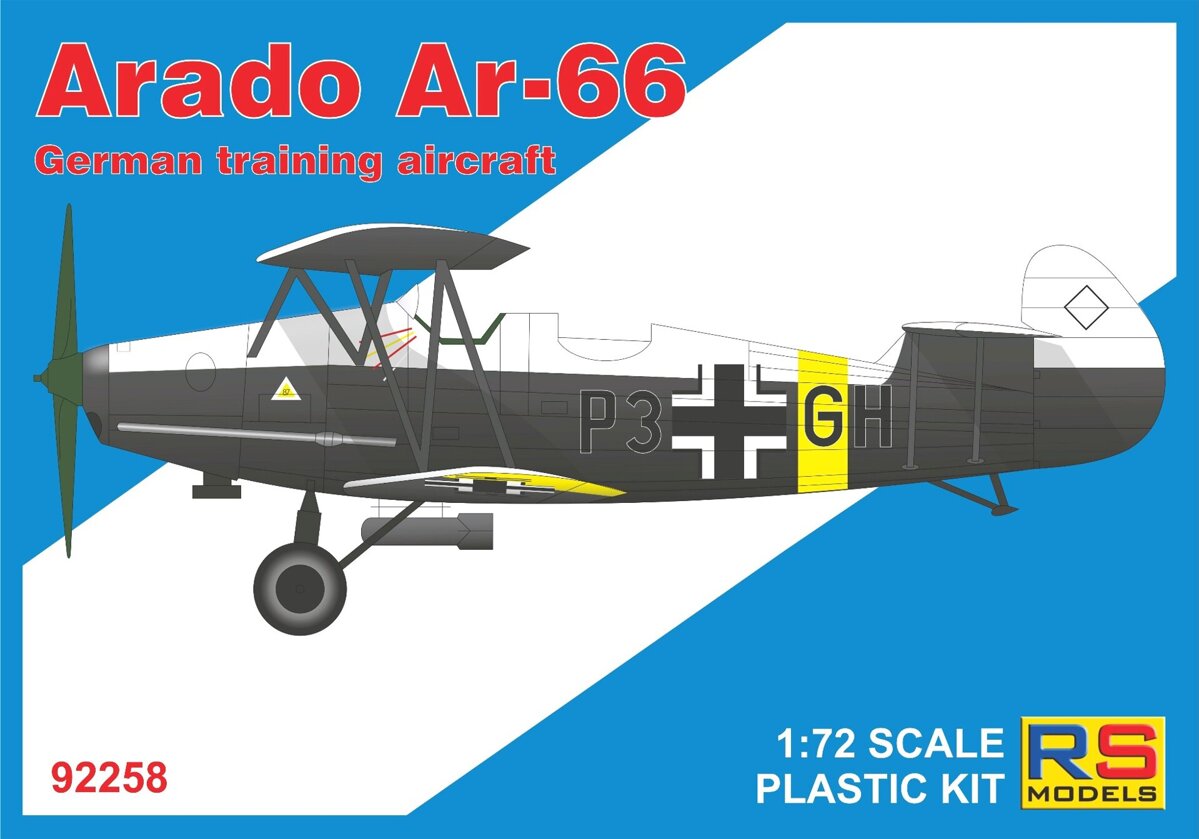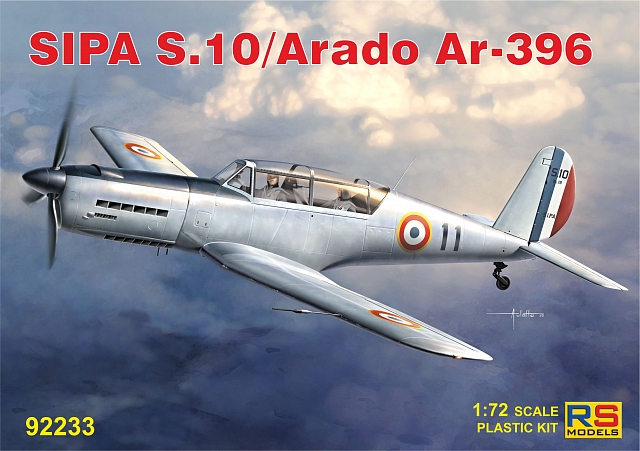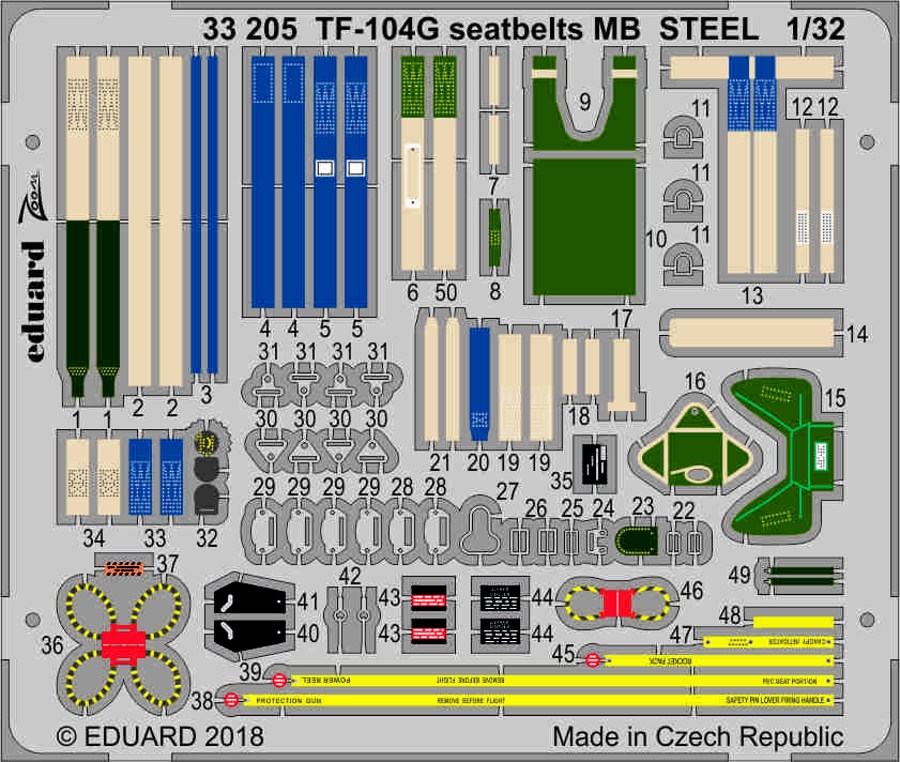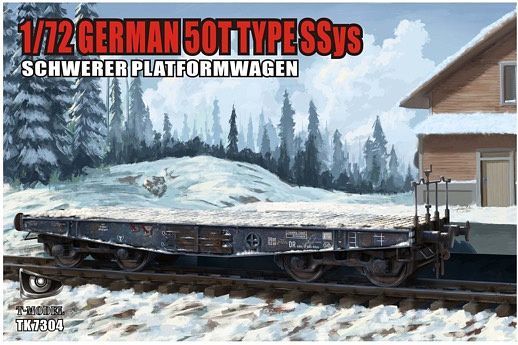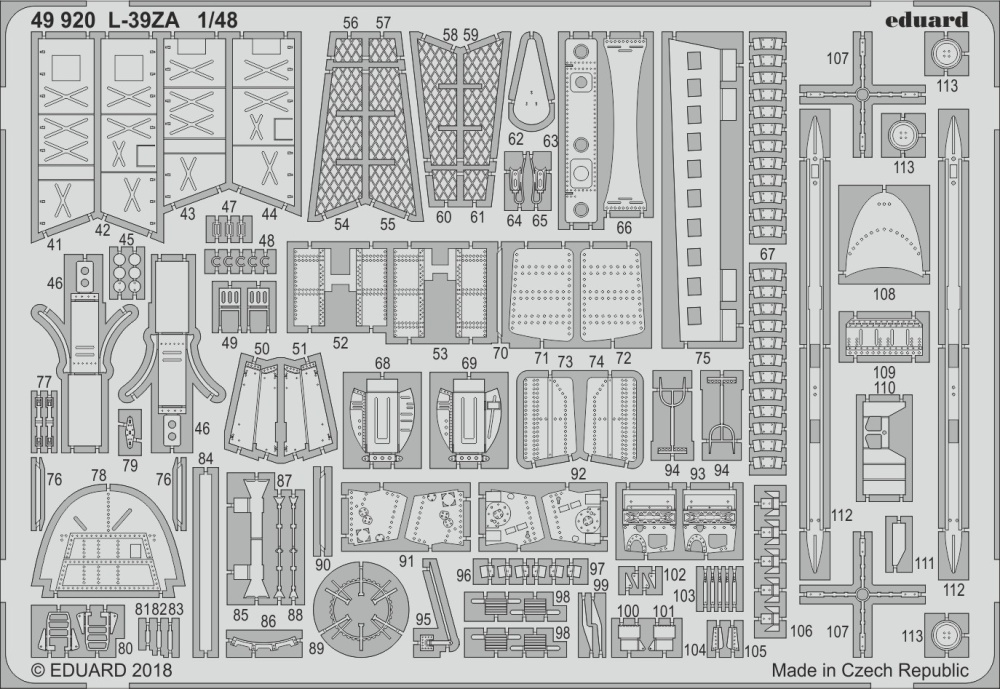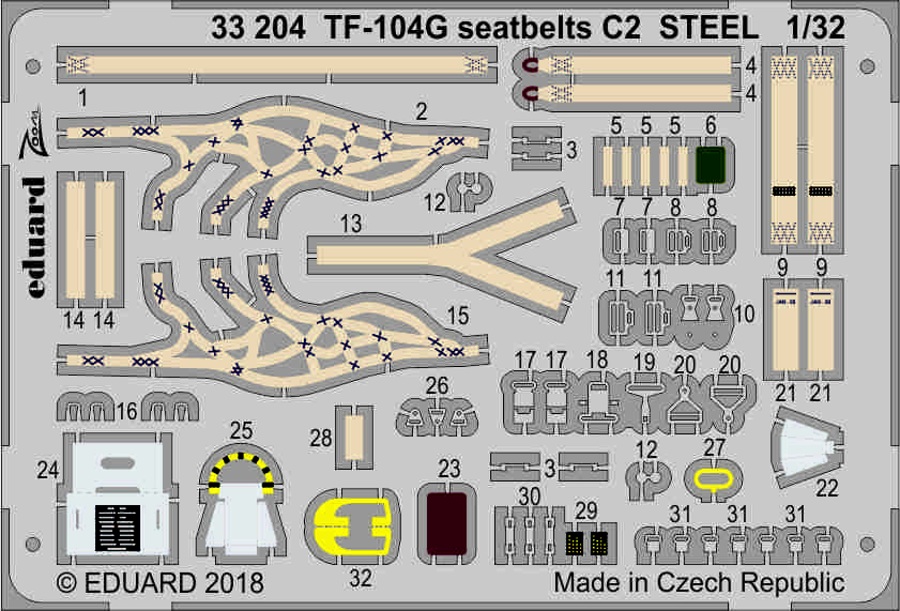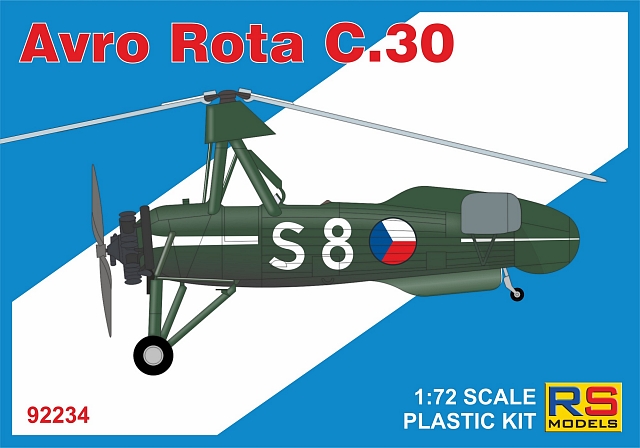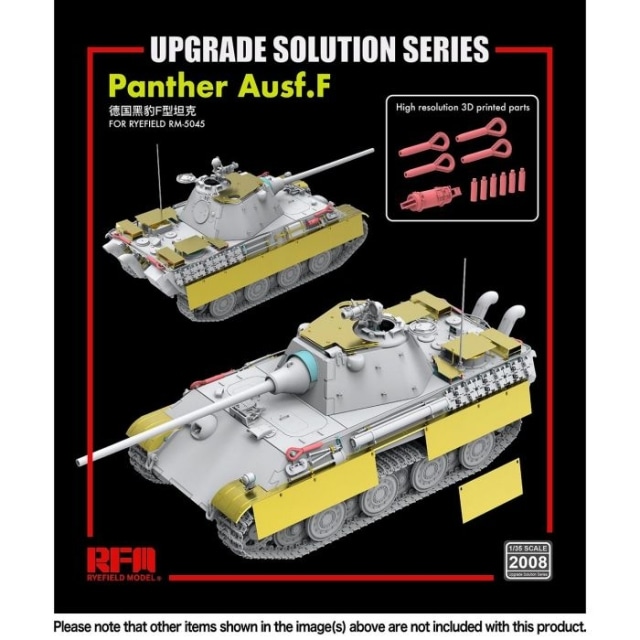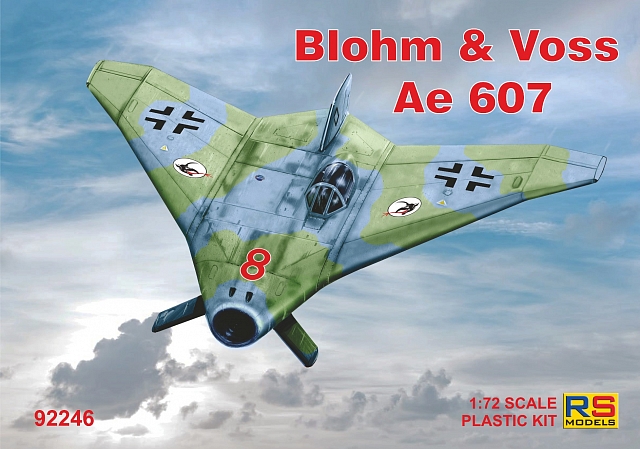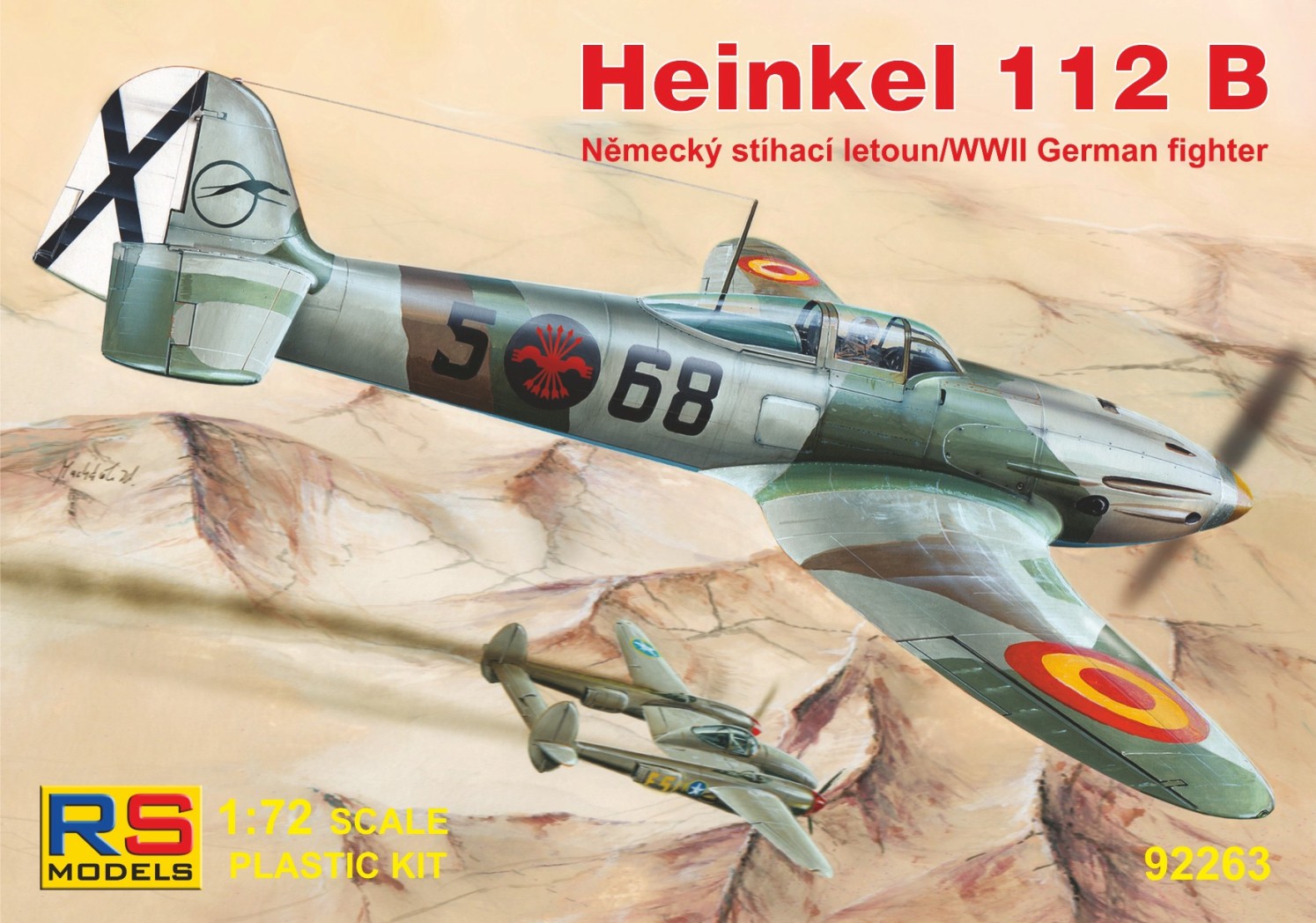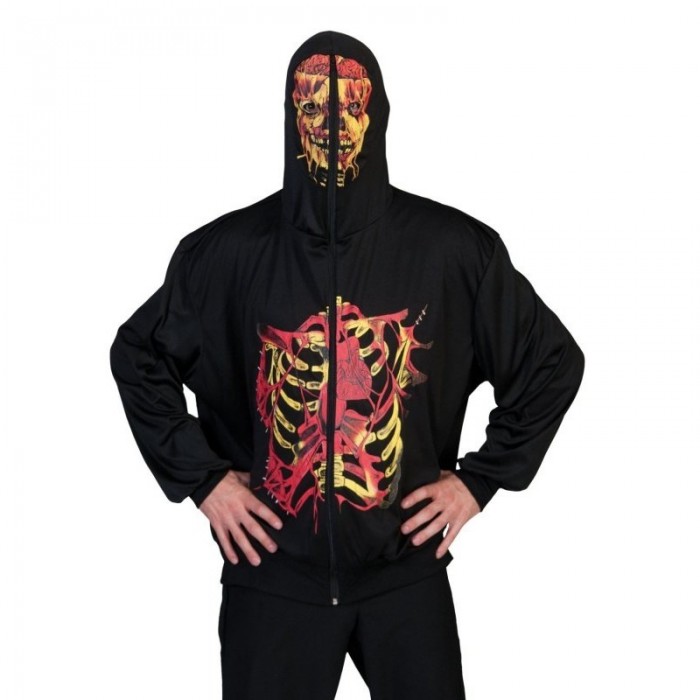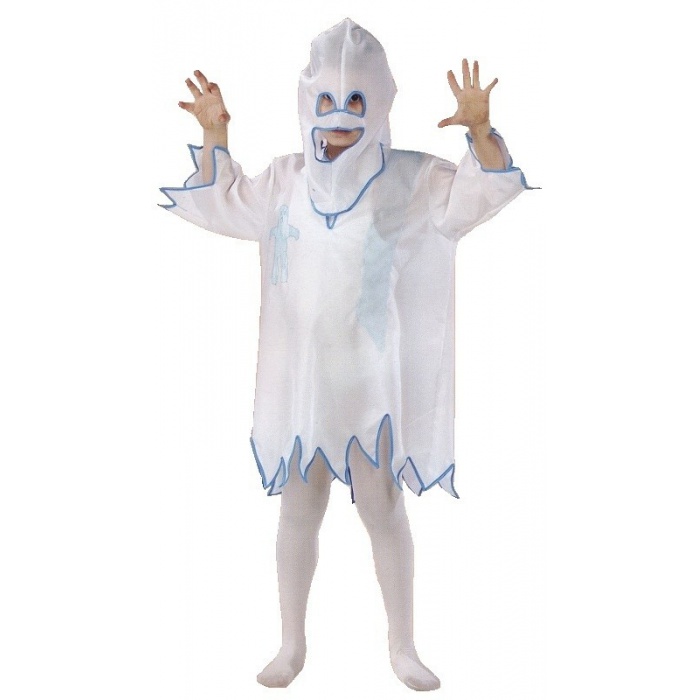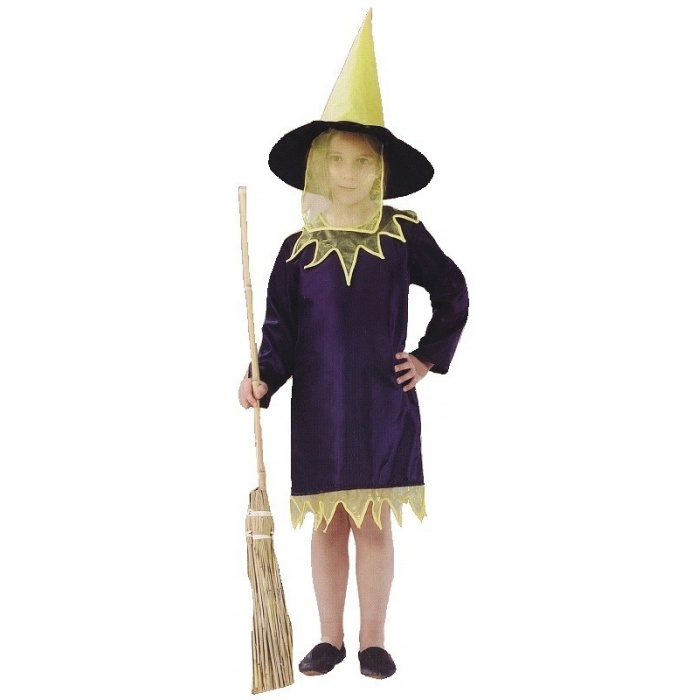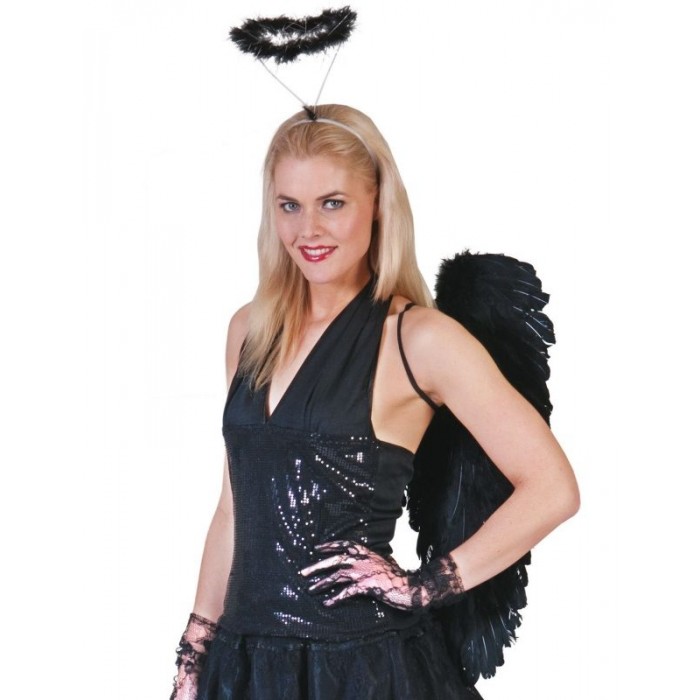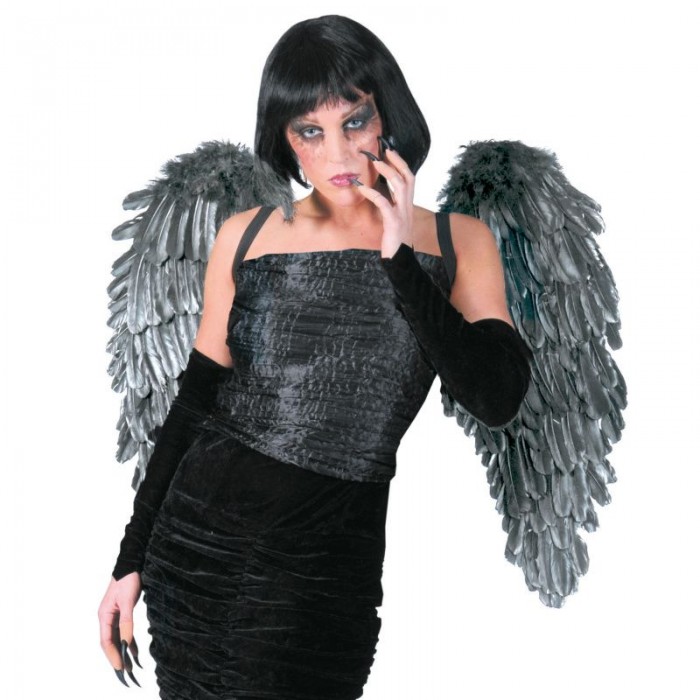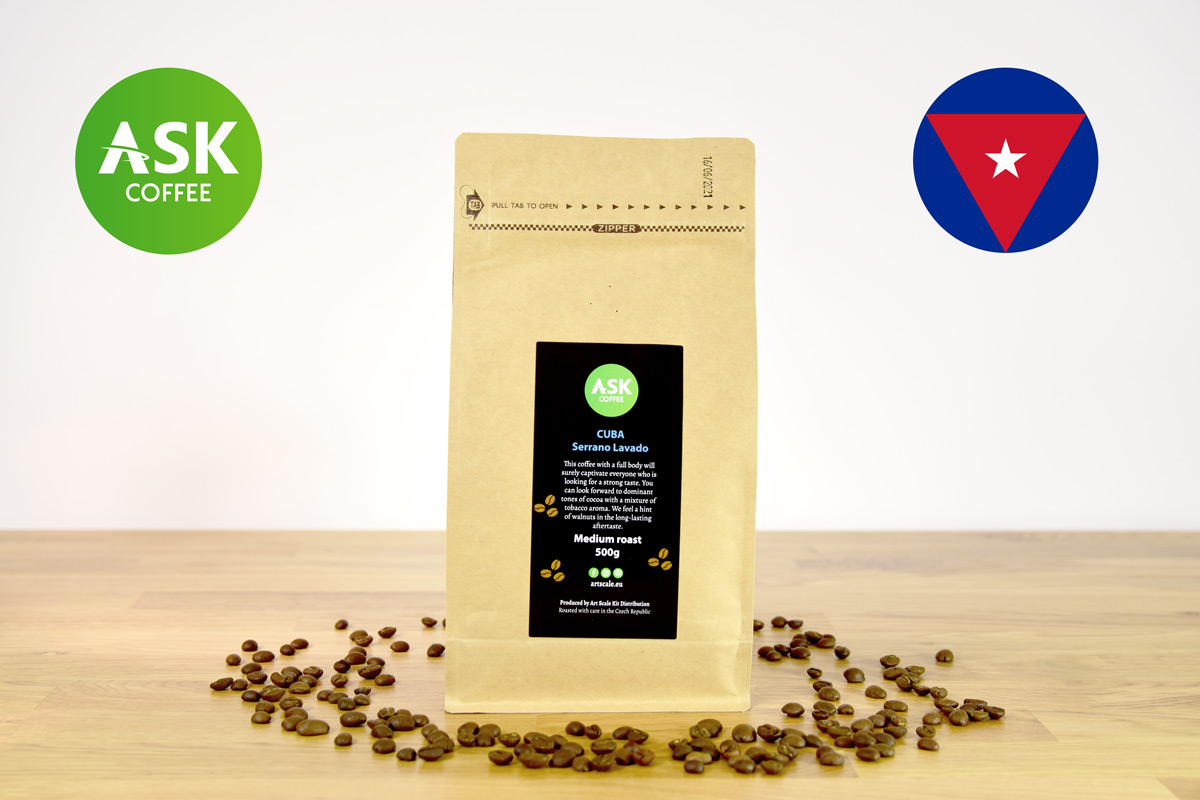Celkem 6479 produktů
Plastikový model letadla 1/72 Bücker Bü-131 B 5 decal v. for Switz, Bulgaria, Luftw., Spain, Finland. 5 decal variants1. Bücker 131B, Swiss AF, Lst, FL.Kp.55, Januar 19452. Bücker 131B, Spain AF, Tablada 19373. Bücker 131B, D-EBZE, Berlin Rangdorf 19374. Bücker 131B, Bulgarian AF, Airfield Sofia-Bozuriste 19405. Bücker 131B, Finnish Aeroclub, 1940The Bücker 131 was a biplane for aerobatic and training use. Was designed by Anders J. Anderson and first flew on April 1934. Production of the Bü 131A powered by an 80hp Hirth HM 60R began in the same year. First aircraft were delivered to the Luftwaffe in 1935 year. During 1936, was produced Bü 131B with powerful 105hp Hirth HM 504A-2 engine. Most produced was the version D. The aircraft was used by Luftwaffe as training, also by night ground-attack. Was also exported in many countries - Japan, Switzerland, Spain, Yugoslavia, Romania and Bulgaria. Under licence was built in Japan and after WWII also in Spain-CASA and Czechoslovakia as C-104 trainer with Walter Minor 4-III.
Plastikový model letadla 1/72 Bloch MB-155 5 decal v. for France, Luftwaffe. The Bloch MB.152 proved the definitive production model with nearly 500 produced. This version was powered by a Gnome-Rhone 14N-25/-49 series air cooled radial piston engine outputting at 1,100 horsepower depending on fitting. This was coupled to a three-bladed variable fixed propeller assembly. The combination supplied the aircraft with a top speed of 316 miles per hour with a range of 370 miles and service ceiling of 32,800 feet. 5 decal variants1. MB-155, No. 703, GC-1, Lt. Lefeuvre, Toulouse, June 19402. MB-155, No. 700, first prototype, France, December 19393. MB-155, No. 704, CO of 1 Escadrille, Capt. Coutaud, Agen, Algeria, June 19404. MB-155, No. 708, GC II/8, Vichy France Air-Force, 19415. MB-155, JG103, Luftwaffe, France 1943
Plastikový model letadla 1/72 Avia B-135 3 decal v. for Luftwaffe, Bulgaria. 3 decal variants1. Avia B-135 - flown on 30th March, 1944 by Jordan Ferdinandov, Bulgaria2. Avia B-135 - FVA Flugtechnische Versuchsanstalt Prag, Letnany 19403. Avia B-135 - Aviation school Dolna Mitropolya, Bulgaria, 1944During the summer of 1939, ing. Novotný and his team initiated considerable re-design and refiment of the B.35, and a new prototype, the B-135, was completed late in the year. The fuselage of the B-135 was essentially similar to that of the B.35.3, the HS 12 Ycrs engine and armament of one 20 mm cannon and two 7,7 mm machine guns were retained, as was the hydraulically-recractable main undercarriage members of the B.35.3 prototype, but a controllable-pitchairscrew was introduced, the rudder was enlarged, and an entirely new wing of all-metal construction was fitted.
Plastikový model letadla 1/72 Caudron CR.714 C-1 4 decal v. for France, Luftwaffe, Finland. 4 decal variants1. Caudron CR-714, 2nd Esc. GC 1/145, Dreux, A. Niewiara, June 19402. Caudron CR-714, 1st Esc. GC 1/145, Villacoublay, L. Uher, May 19403. Caudron CR-714, Finland, May 19414. Caudron CR-714, test aicraft, Luftwaffe 1940The first prototype was test flown in July 1938 and the first production machine, powered by a Renault 12R-03, was delivered in July 1939. The armament consisted of four 7,5mm MAC 1934 machine guns located in two wing gondolas. Only GC 1-145 was equipped with the Caudron C.714. It was a unit composed of Polish pilots under French command. They fought against the Luftwaffe in spring 1940 and despite the aircraft climbing, the highly battle motivated Polish pilots scored 8 confirmed victories with an overall loss of 7 pilots. Until the fall of France, more than 60 machines were produced and several were in progress. At least one machine was tested by the Luftwaffe.
Plastikový model letadla 1/72 Reggiane 2005 3 decal v. for Italy, ANR. Reggiane Re.2005 Sagittario byl stíhací letoun, který vznikl vývojem z typu Reggiane Re.2000. Vývoj nového letounu začal již v roce 1941 a v květnu 1942 vzlétl první prototyp. Ten dosáhl rychlosti 628 km/h. Nové křídlo neslo nový podvozek zatahovaný směrem ke koncům křídla a dva 20 mm kanóny, které s dalším v bloku motoru a s dvěma 12,7 mm kulomety nad motorem představovaly impozantní výzbroj. 3 obtiskové varianty: 1. Reggiane 2005, 362a Sq., Capua, October 1943 2. Reggiane 2005, 362a Sq., Capua, October 1943 3. Reggiane 2005, Aeronau. Nazionale Rep., Bresso, March 1944 V únoru objednala italská vláda nultou sérii v počtu 18 kusů a následných 750 kusů, ale v situaci, kdy to již bylo nereálné. Druhý prototyp, zkoušený od jara 1943 Němci, dosáhl rychlosti 720 km/h a přelétl do Rumunska, kde byl včleněn do protiletecké obrany naftových polí. Vlastní dodávky RE.2005 začaly v květnu 1943 s licenčními motory Fiat RA.1050 RC-58 o výkonu 1475 k. Po kapitulaci Itálie byly vyrobené kusy zabavené Němci, přičemž několik letounů sloužilo u jednotek protivzdušné obrany Berlína.
1/72 GERMAN 80T TYPE SSYMS SCHWERER PLATFORMWAGEN. This is an injection-plastic military vehicle model kit. The Type SSyms 80-ton armored railway flatbed car was used by the Germans to transport their heavy tanks during WWII. This kit includes two frets of photo-etched parts and decals for 2 markings versions. [Includes]: Photo-etched parts, decals for 2 versions
Plastikový model letadla 1/72 Arado 66 4 decal v. for Luftwaffe. Arado Ar 66 byl německý jednomotorový dvoumístný dvouplošný školní letoun s pevným podvozkem. troje Ar 66 C se staly jedním z nejrozšířenějších školních strojů Luftwaffe, které byly používány až do konce II. světové války. Zařazeny byly u leteckých škol FFS A/B 4 v Praze-Kbelích, FFS A/B 11 v Schönwalde, FFS A/B 23 v Kaufbeurenu a FFS A/B 116 v Göppingenu. 4 obtiskové varianty: 1. Arado 66C, P3+GH, .1 Störkampfstaffel Luftwaffenkommando Ost., February 1943 2. Arado 66C, Jan Řezňák, Nikolaevna, Luftwaffe, 1942 3. Arado 66C, F6+BM, Luftwaffe, 1943 4. Arado 66C, D3+SL, 3./NSGr.2, Baranowitze a Uretschje, SSSR 1944 Po vzniku Störkampfstaffeln v Luftwaffe začaly Ar 66 C plnit úlohu nočních bombardovacích letounů, po vzoru sovětských jednotek vybavených letouny Polikarpov Po-2 nebo Polikarpov R-5. Přestavby se uskutečňovaly v leteckých dílnách na letišti v Německém Brodě. Dne 7. října 1943 byly letky lehkých nočních bombardérů přejmenovány na Nachtschlachtgruppen. „Céčka" pak operovala v 1., 2. a 4./NSGr.2, NSGr.3, 2./NSGr.4 a NSGr.5 v SSSR, NSGr.8 ve Finsku a 3./NSGr.11 a NSGr.12 v Litvě.
Plastikový model letadla 1/72 SIPA S.10/Arado Ar 396 4 decal v. for France, Luftwaffe. V roce 1943 zahájilo Reichsluftfahrtministerium program úspor hliníkových slitin, barevných kovů a kvalitních ocelí v letecké výrobě, zejména u nebojových typů. V rámci úspor těchto materiálů měl být školní Ar 96 nahrazen novým strojem, produkovaným z nedeficitního dřeva a běžné oceli. Společnost Arado přesunula vývoj nového typu Ar 396 ke společnosti Société Industrielle pour l'Aeronautique v okupované Francii. Němečtí a francouzští konstruktéři zde navrhli jednoduchý letoun dřevěné konstrukce, pouze střední kabinová část trupu byla navržena jako příhrada z ocelových trubek potažená tenkým ocelovým plechem. Ocelové trubky byly také v nosnících křídla. Za pohon byl vybrán vzduchem chlazený řadový invertní dvanáctiválec Argus As 411 TA-1 o výkonu 426 kW s dvoulistou automaticky stavitelnou vrtulí. Letecký výrobce SIPA měl postavit tři prototypy Ar 396 a 25 sériových strojů ověřovací série.
Plastikový model letadla 1/72 Bloch MB-155 5 decal v. for France, Luftwaffe. The Bloch MB.152 proved the definitive production model with nearly 500 produced. This version was powered by a Gnome-Rhone 14N-25/-49 series air cooled radial piston engine outputting at 1,100 horsepower depending on fitting. This was coupled to a three-bladed variable fixed propeller assembly. The combination supplied the aircraft with a top speed of 316 miles per hour with a range of 370 miles and service ceiling of 32,800 feet. 5 decal variants1. MB-155, No. 703, GC-1, Lt. Lefeuvre, Toulouse, June 19402. MB-155, No. 700, first prototype, France, December 19393. MB-155, No. 704, CO of 1 Escadrille, Capt. Coutaud, Agen, Algeria, June 19404. MB-155, No. 708, GC II/8, Vichy France Air-Force, 19415. MB-155, JG103, Luftwaffe, France 1943
Plastikový model letadla 1/72 XP-79 Flying Ram 3 decal v. for USA. Northrop XP-79 Flying Ram byl ambiciózní americký projekt stíhacího samokřídla, s proudovým pohonem, vyvíjený firmou Northrop. Typ měl ničit nepřátelské letouny taranem a obsahoval několik novátorských konstrukčních řešení. Pilot letoun řídil v pozici vleže na břiše a tak měl lépe snášet vysoká přetížení během bojových manévrů. 3 obtiskové varianty: 1. XP-79B Flying Ram, prototype, Muroc dry lake, September 1945 2. XP-79B Flying Ram, RE Farnborough, 1946 (alternate marking) 3. XP-79B Flying Ram, USA Home defence, Alaska 1946 (alternate marking) Skořepinová konstrukce byla namísto z hliníku vytvořena z lehčího hořčíku (magnézia). Jack Northrop v roce 1942 navrhl projekt XP-79 jako vysoce výkonné stíhací samokřídlo s raketovým pohonem, které mělo dosáhnout až rychlosti zvuku. Koncepce byla podobná německému Messerschmittu Me 163. V lednu 1943 USAAF objednalo stavbu tří prototypů. Pro otestování aerodynamické koncepce byly vyrobeny tři kluzáky. První s označením MX-324 poprvé vzlétl 5. července 1944 ve vleku za letounem Lockheed P-38 Lightning. MX-324 při letu použil raketové motory a stal se prvním americkým letounem, který letěl na raketový pohon.
Plastikový model letadla 1/72 Caudron CR.714 C-1 4 decal v. for France, Luftwaffe, Finland. 4 decal variants1. Caudron CR-714, 2nd Esc. GC 1/145, Dreux, A. Niewiara, June 19402. Caudron CR-714, 1st Esc. GC 1/145, Villacoublay, L. Uher, May 19403. Caudron CR-714, Finland, May 19414. Caudron CR-714, test aicraft, Luftwaffe 1940The first prototype was test flown in July 1938 and the first production machine, powered by a Renault 12R-03, was delivered in July 1939. The armament consisted of four 7,5mm MAC 1934 machine guns located in two wing gondolas. Only GC 1-145 was equipped with the Caudron C.714. It was a unit composed of Polish pilots under French command. They fought against the Luftwaffe in spring 1940 and despite the aircraft climbing, the highly battle motivated Polish pilots scored 8 confirmed victories with an overall loss of 7 pilots. Until the fall of France, more than 60 machines were produced and several were in progress. At least one machine was tested by the Luftwaffe.
Plastikový model letadla 1/72 Avia B-135 3 decal v. for Luftwaffe, Bulgaria. 3 decal variants1. Avia B-135 - flown on 30th March, 1944 by Jordan Ferdinandov, Bulgaria2. Avia B-135 - FVA Flugtechnische Versuchsanstalt Prag, Letnany 19403. Avia B-135 - Aviation school Dolna Mitropolya, Bulgaria, 1944During the summer of 1939, ing. Novotný and his team initiated considerable re-design and refiment of the B.35, and a new prototype, the B-135, was completed late in the year. The fuselage of the B-135 was essentially similar to that of the B.35.3, the HS 12 Ycrs engine and armament of one 20 mm cannon and two 7,7 mm machine guns were retained, as was the hydraulically-recractable main undercarriage members of the B.35.3 prototype, but a controllable-pitchairscrew was introduced, the rudder was enlarged, and an entirely new wing of all-metal construction was fitted.
1/72 GERMAN 50T TYPE SSYS SCHWERER PLATFORMWAGEN. This is an injection-plastic military vehicle model kit. The Type SSys 50-ton armored railway flatbed car was used by the Germans to transport their heavy tanks during WWII. This kit includes two frets of photo-etched parts and decals for 2 markings versions. [Includes]: Photo-etched parts, decals for 2 versions
Plastikový model letadla 1/72 Bücker Bü-131 B 5 decal v. for Switz, Bulgaria, Luftw., Spain, Finland. 5 decal variants1. Bücker 131B, Swiss AF, Lst, FL.Kp.55, Januar 19452. Bücker 131B, Spain AF, Tablada 19373. Bücker 131B, D-EBZE, Berlin Rangdorf 19374. Bücker 131B, Bulgarian AF, Airfield Sofia-Bozuriste 19405. Bücker 131B, Finnish Aeroclub, 1940The Bücker 131 was a biplane for aerobatic and training use. Was designed by Anders J. Anderson and first flew on April 1934. Production of the Bü 131A powered by an 80hp Hirth HM 60R began in the same year. First aircraft were delivered to the Luftwaffe in 1935 year. During 1936, was produced Bü 131B with powerful 105hp Hirth HM 504A-2 engine. Most produced was the version D. The aircraft was used by Luftwaffe as training, also by night ground-attack. Was also exported in many countries - Japan, Switzerland, Spain, Yugoslavia, Romania and Bulgaria. Under licence was built in Japan and after WWII also in Spain-CASA and Czechoslovakia as C-104 trainer with Walter Minor 4-III.
Plastikový model letadla 1/72 Avro Rota C.30A 4 decal v. for Czeczslovak.,RAF, Yugoslavia, Australia. The first production design in the series was the C.30, a radial-engined autogyro with a three-blade, 37 ft (11.3 m) rotor mounted on an aft-leaning tripod, the control column extending into the rear of the two cockpits. The engine was the five-cylinder, 105 hp (78 kW) Armstrong Siddeley Genet Major I used in the C.19 series. The fabric-covered fuselage carried an unbraced tailplane, without elevators but with turned-up tips. The port side of the tailplane had an inverted aerofoil section to counter roll-axis torque produced by the propeller. As with most autogyros, a high vertical tail was precluded by the sagging resting rotor, so the dorsal fin was long and low, extending well aft of the tailplane like a fixed rudder and augmented by a ventral fin. The wide-track undercarriage had a pair of single, wire-braced legs and a small tail wheel was fitted. This model flew in April 1933. It was followed by four improved machines designated C.30P (P here for pre-production) which differed in having a four-legged pyramid rotor mounting and a reinforced undercarriage with three struts per side. The rotor could be folded rearwards for transport. The C.30P used the more powerful (140 hp, 104 kW) seven-cylinder Armstrong Siddeley Genet Major IA radial engine.
Plastikový model letadla 1/72 Avro Rota C.30A 4 decal v. for Czeczslovak.,RAF, Yugoslavia, Australia. The first production design in the series was the C.30, a radial-engined autogyro with a three-blade, 37 ft (11.3 m) rotor mounted on an aft-leaning tripod, the control column extending into the rear of the two cockpits. The engine was the five-cylinder, 105 hp (78 kW) Armstrong Siddeley Genet Major I used in the C.19 series. The fabric-covered fuselage carried an unbraced tailplane, without elevators but with turned-up tips. The port side of the tailplane had an inverted aerofoil section to counter roll-axis torque produced by the propeller. As with most autogyros, a high vertical tail was precluded by the sagging resting rotor, so the dorsal fin was long and low, extending well aft of the tailplane like a fixed rudder and augmented by a ventral fin. The wide-track undercarriage had a pair of single, wire-braced legs and a small tail wheel was fitted. This model flew in April 1933. It was followed by four improved machines designated C.30P (P here for pre-production) which differed in having a four-legged pyramid rotor mounting and a reinforced undercarriage with three struts per side. The rotor could be folded rearwards for transport. The C.30P used the more powerful (140 hp, 104 kW) seven-cylinder Armstrong Siddeley Genet Major IA radial engine.
Plastikový model letadla 1/72 Dewoitine D-520 4 decal v. for France. Dewoitine D.520 bylo francouzské stíhací letadlo, které začalo vstupovat do služby jen těsně před vypuknutím druhé světové války. Na projektu Dewoitine.520 se začalo pracovat v listopadu 1936 v soukromé konstrukční firmě vedené Emilem Dewoitinem. První prototyp D.520 poprvé vzlétl 2. října 1938 a byl poháněn novým kapalinou chlazeným motorem Hispano-Suiza 12Y-21 o výkonu 890 koňských sil (660 kW). Během letových zkoušek se však podařilo dosáhnout rychlosti jen 480 km/h, což bylo mnohem méně než očekávaných 520 km/h. Původní prototyp a dva další draky letadla byly v roce 1939 vybaveny novým posuvným krytem a většími ocasními plochami. Tyto prototypy byly vyzbrojeny 20 mm kanónem pálícím skrz dutou hřídel vrtule (tato vlastnost se později objevila v mnoha německých i ruských projektech) a dvěma 7,5 mm kulomety v malých tobolkách pod křídly. Letové zkoušky šly poměrně dobře, takže firma získala v březnu 1939 kontrakt na 200 sériových strojů poháněných novějším motorem Hispano-Suiza 12Y-31. 4 obtiskové varianty: 1. D.520, G.C. III/3, Josef Stehlík, Toulose, May 1940 2. D.520, G.C. III/7, N°421, S/Lt. Yves Rupied, Toulose-Francazal, June 1940 3. D.520, G.C. I/3, N°94, May 1940 4. D.520, G.C. I/3, N°73, André Carrier, Wez-Thuist, May 1940
Plastikový model letadla 1/72 Blohm and Voss Ae 607 4 decal v. for Luftwaffe, Great Britain. Early in 1945, a Blohm & Voss (B&V) aircraft designer called Thieme began work on Drawing Number Ae 607, within the standard drawing numbering system at B&V. His design for a jet fighter was radically different from anything that B&V had done before. A flying wing, it approximated to a 45° delta planform. Reports of its existence were not confirmed until 2017, when the drawing was published. No Project number is recorded for the design and its intended status is unknown.[
Plastikový model letadla 1/72 SIPA S.10/Arado Ar 396 4 decal v. for France, Luftwaffe. V roce 1943 zahájilo Reichsluftfahrtministerium program úspor hliníkových slitin, barevných kovů a kvalitních ocelí v letecké výrobě, zejména u nebojových typů. V rámci úspor těchto materiálů měl být školní Ar 96 nahrazen novým strojem, produkovaným z nedeficitního dřeva a běžné oceli. Společnost Arado přesunula vývoj nového typu Ar 396 ke společnosti Société Industrielle pour l'Aeronautique v okupované Francii. Němečtí a francouzští konstruktéři zde navrhli jednoduchý letoun dřevěné konstrukce, pouze střední kabinová část trupu byla navržena jako příhrada z ocelových trubek potažená tenkým ocelovým plechem. Ocelové trubky byly také v nosnících křídla. Za pohon byl vybrán vzduchem chlazený řadový invertní dvanáctiválec Argus As 411 TA-1 o výkonu 426 kW s dvoulistou automaticky stavitelnou vrtulí. Letecký výrobce SIPA měl postavit tři prototypy Ar 396 a 25 sériových strojů ověřovací série.
1/48 Walrus Mk. I Air Sea Rescue. The third version offers two Walrus Mk.Is used by RAF (ASR) No.293 Squadron for rescue of the downed pilots at sea. One of the machines sports markings of 23 characters for the successful rescue missions. Both members of this Australian crew (pilot F/L E. J. Holmes and radio operator J. R. Berry) were decorated by DFM for saving many lives.
Tento karnevalový kostým promění vaši holčičku na Sněhovou královnu. Dívčí oblek obsahuje závoj s vločkami a třpytivé šatičky modré barvy. Skvěle se hodí na dětské párty, oslavy, karnevaly, maškarní plesy, Halloween nebo na dětské fotografování. Kostým neobsahuje boty a punčocháče, takže si můžete tyto doplňky zvolit/vyrobit podle vlastní fantazie. Kostým Sněhové královny je vhodný pro děti ve věku od 5 do 9 let s výškou 120 až 130 cm. Hlavní přednosti Roztomilý kostým Kompletní závoj – závoj s vločkami a třpytivé šatičky modré barvy Boty i punčocháče si můžete vybrat či vyrobit podle vaší fantazie Specifikace Značka: MaDe Určení: karnevalový kostým Motiv: Sněhová královna Doporučený věk: 5 až 9 let Vhodná výška: 120 až 130 cm Barva kostýmu: modrá Kostým: závoj + lesklé šaty Rozměry balení (Š x V x H): 32 x 42 x 4 cm Obsah balení 1x karnevalový kostým na motivy Sněhové královny
Coffee Cuba Serrano Lavado medium roast (500g). Excellent taste experience in the Caribbean style. This coffee with a full body will surely captivate everyone who is looking for a strong taste. You can look forward to dominant tones of cocoa with a mixture of tobacco aroma. We feel a hint of walnuts in the long-lasting aftertaste. Coffee is usually grown in Cuba at altitudes around 700 m.n.m. Roasting type: mediumTaste profile: Hazelnut, ChocolateMethod of preparation: Automatic coffee machineEspressoAeropressFrench pressMoka teapot / BialletiDrip / Filter
Coffee Cuba Serrano Lavado medium roast (500g). Excellent taste experience in the Caribbean style. This coffee with a full body will surely captivate everyone who is looking for a strong taste. You can look forward to dominant tones of cocoa with a mixture of tobacco aroma. We feel a hint of walnuts in the long-lasting aftertaste. Coffee is usually grown in Cuba at altitudes around 700 m.n.m. Roasting type: mediumTaste profile: Hazelnut, ChocolateMethod of preparation: Automatic coffee machineEspressoAeropressFrench pressMoka teapot / BialletiDrip / Filter
